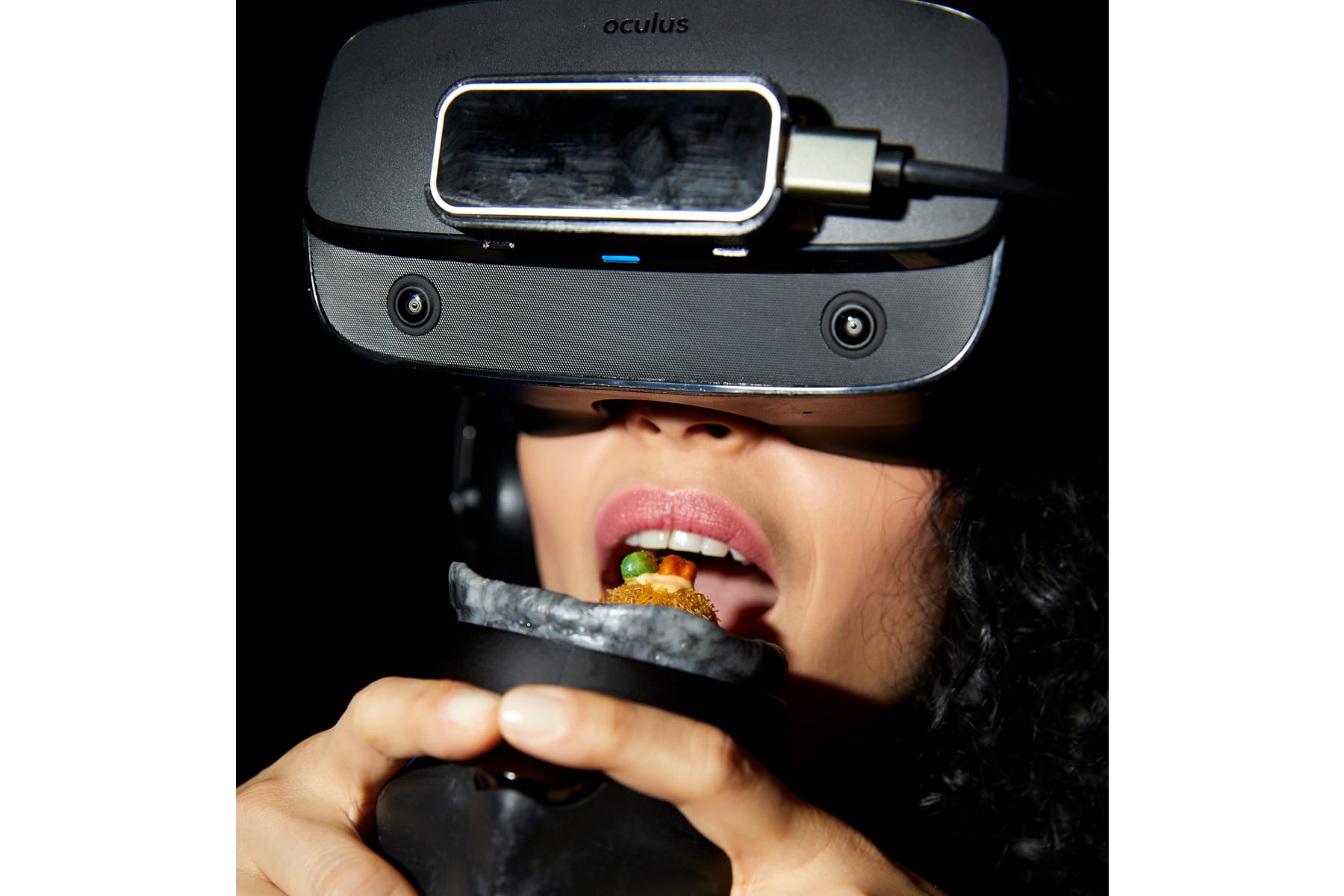
The Real Taste, Chewing, Touch, and Smell of Virtual Reality
Virtual reality (VR) is already a revolutionary technology, but it's about to become even more immersive. Researchers are developing new ways to simulate taste, chewing, touch, and smell in VR.
Taste:
Researchers at the National University of Singapore are developing a device that simulates taste by rapidly changing the temperature on the tip of the tongue. They have already shown that this device can successfully simulate the taste of sweetness.
Chewing:
Researchers at the University of Tokyo have developed a device that simulates chewing by causing the jaw muscles to contract using tiny electric currents. This device could be combined with the taste simulator to create a truly immersive virtual dining experience.
Touch:
Scientists at the Swiss Institute of Technology Lausanne have invented an ultra-thin skin that can distort itself and adapt to your moving body. This skin is equipped with pneumatic actuators that make it feel like you're touching something real.
Smell:
The startup OVR Technology is developing a device called the ION that attaches to a VR headset and releases different scents based on what the user is interacting with in virtual reality.These new technologies have the potential to revolutionize the way we experience VR. They could be used to create more realistic and immersive virtual worlds for gaming, education, and even therapy.Here are some potential applications of these new VR technologies:
- Taste: Virtual tastings of food and wine, cooking classes, and educational experiences about different cultures and cuisines.
- Chewing: Virtual dining experiences, food education games, and dental training simulations.
- Touch: Virtual surgery training, rehabilitation exercises, and haptic feedback for VR games.
- Smell: Virtual travel experiences, aromatherapy sessions, and educational experiences about different cultures and environments.
These technologies are still in development, but they have the potential to make VR even more immersive and engaging.
Researchers from the National University of Singapore claim they will soon be able to offer virtual gastronomy enthusiasts a tool that will allow them to taste the dish that appears on the screen. They base the gadget on rapid temperature changes on the tip of the tongue, which, according to the researchers, restore the taste of sweet foods virtually.
An initial version of the device showed encouraging results: out of 15 experimenters, eight reported they did indeed feel the sweet taste when running the gadget. The next step is to combine the technology in a regular-sized spoon, a version that should be ready in early 2017. The researchers hope that thanks to their invention, people with diabetes or those hoping to maintain a healthy diet will still be able to enjoy sweet foods.
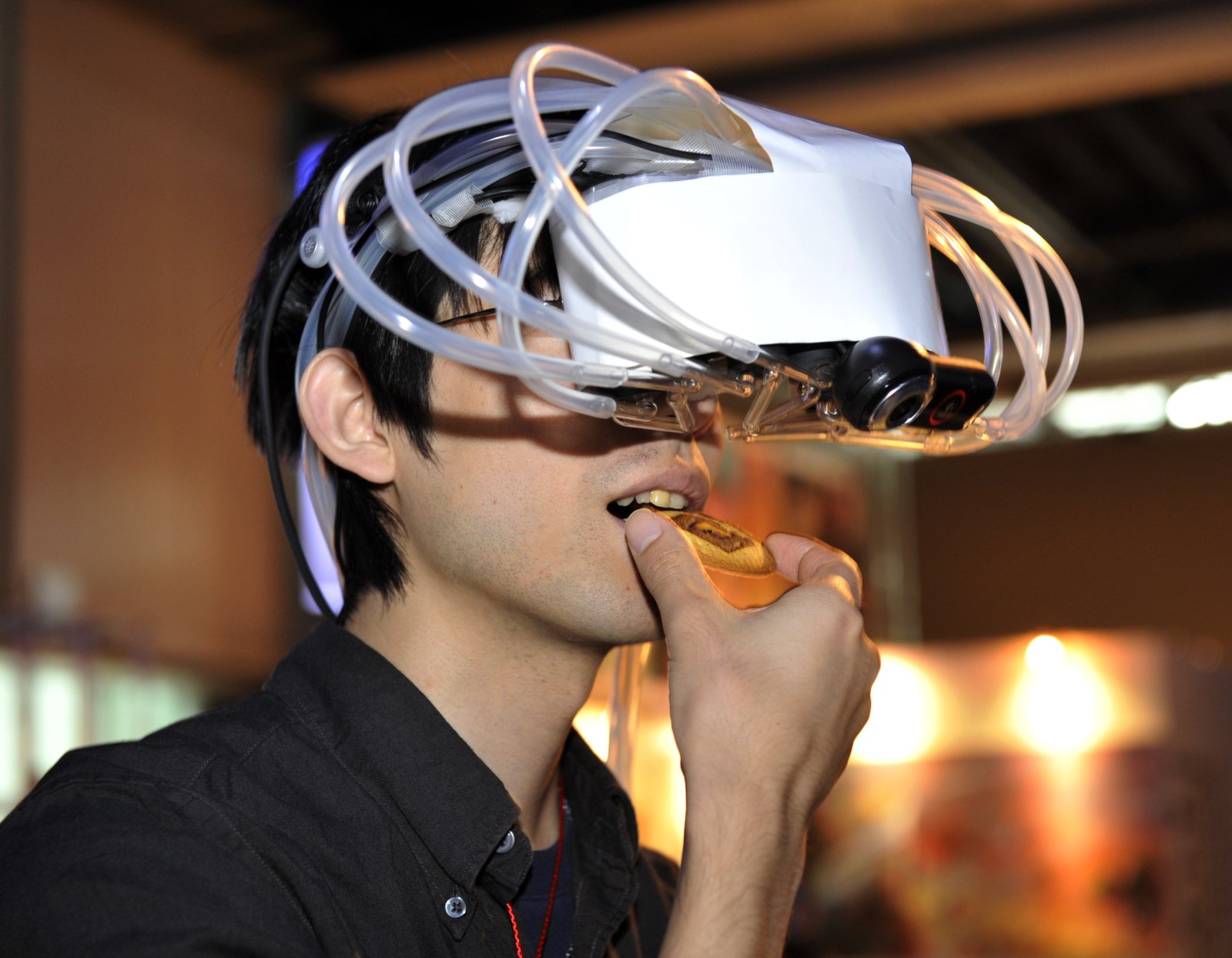
The real chewing of virtual reality
Another invention, recently unveiled by researchers at the University of Tokyo, supposed to enable the experience of physical chewing in virtual reality. Tiny electric currents cause the jaw muscles to contract, a feeling similar to that of chewing solid foods. Combining such inventions may allow for a fairly interesting virtual dining experience over the next few years, and will visit the VR world much more enjoyable.
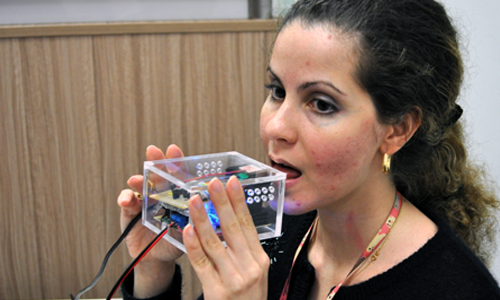
The real touch of virtual reality
New wearable skin allows you to touch and feel things in virtual reality, the new technology feels natural without electronic vibrations, scientists from the Swiss Institute of Technology Lausanne have invented an ultra-thin skin that can distort itself and adapt to your moving body. They designed the skin to give users a virtual and augmented reality touch of feedback that feels natural without the use of electronic vibration.
This could be the breakthrough we have been waiting for in virtual reality.
The study, published in Soft Robotics, describes soft skin as less than 500 mm thick. They equipped the skin with pneumatic actuators that will really make you feel you are touching something real and not just a simulation of the apathetic electronic engine that really feels like the real thing.
The artificial skin also has integrated sensors that transmit data used to modulate the pressure. The scientist claims that this is the first time they have achieved such an excellent result.

According to the study, "Their SPA skin is a multi-layered system that can easily be applied as a quick and wearable two-way interface to feel touch and feedback." If you are wearing gloves or a suit made of artificial leather, the product will allow you to feel a proper surface in the world of virtual reality.
However, the skin does not prevent you from moving your fingers when activating the membranes to give you the illusion of actual touch.
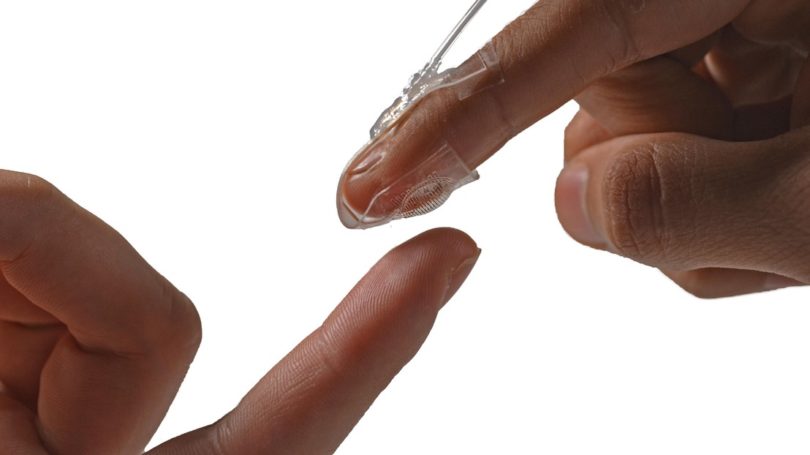
The scientists who introduced the recent development do not really give any timelines when the recent development can turn into a mass-produced device. Researcher Herschel Sonar says that "the next step will be to develop a completely portable prototype for rehabilitation applications and augmented virtual reality." She also added that they are looking to test the prototype in neuroscience studies. Scientists predict doctors will be able to "stimulate the human body while researchers study dynamic brain activity in magnetic resonance experiments." - if it really works the way we plan it will - the wearable skin will soon be on the market. After all, touch is the last piece needed to apply a genuine sense of virtual reality. Just in the last few weeks, Facebook has been playing out how it incorporates using your hands as controllers for Oculus Quest virtual reality goggles.
The real smell of virtual reality
The startup OVR Technology is incorporating smell into virtual reality and using it in a new program designed to allow people to experience the effects of climate change.
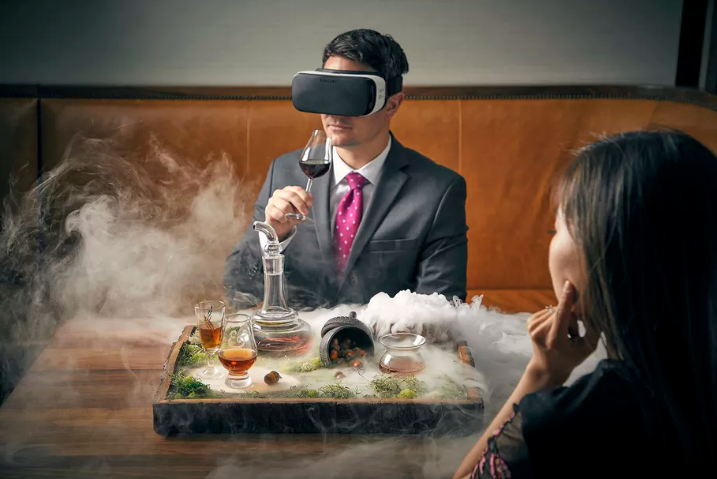
Why it matters: VR can already simulate sight, sound and a sense of movement, but adding smell can help stimulate memories and emotional experiences, making virtual reality even more real. How it works: A device called the ION, which contains vials of different scents, is attached to a VR headset. When a user interacts with an object in virtual reality connected to one of those scents — say, a rose — a tiny electric charge releases the matching fragrance. "Smell is the factor that can create a truly human experience in virtual reality," says OVR CEO Aaron Wisniewski, who trained as a scent expert before co-founding the company.
Here are some exciting new articles you don't want to miss!
- New wearable skin lets you touch VR stuff and really feel it.
- Apple Vision Pro: The Future of Spatial Computing
- Learn a New Language in Virtual Reality Without Leaving Your Home
- Meta Quest 3: Everything you need to know
- Amazing products for your VR from Amazon
- The Best Accessories for Microsoft Flight Simulator
- Smart Contact Lenses: The Next Frontier in Augmented Reality
- Experience the future of sex with virtual reality and artificial intelligence
More News:
- UNLEASHING NATURE'S POWER: HARNESSING THE BODY'S NATURAL IONS FOR WIRELESS DATA TRANSMISSION
- META QUEST 2 ACCESSORIES
- EVERYTHING YOU NEED TO KNOW ABOUT QUEST 3 VR, RAY-BAN SMART GLASSES AND META AI
- 14 VR Games That Are Still Worth Playing
Here are the links to my social media pages:
Facebook: [link]
YouTube: [link]
LinkedIn: [link]
Twitter (x): [link]






